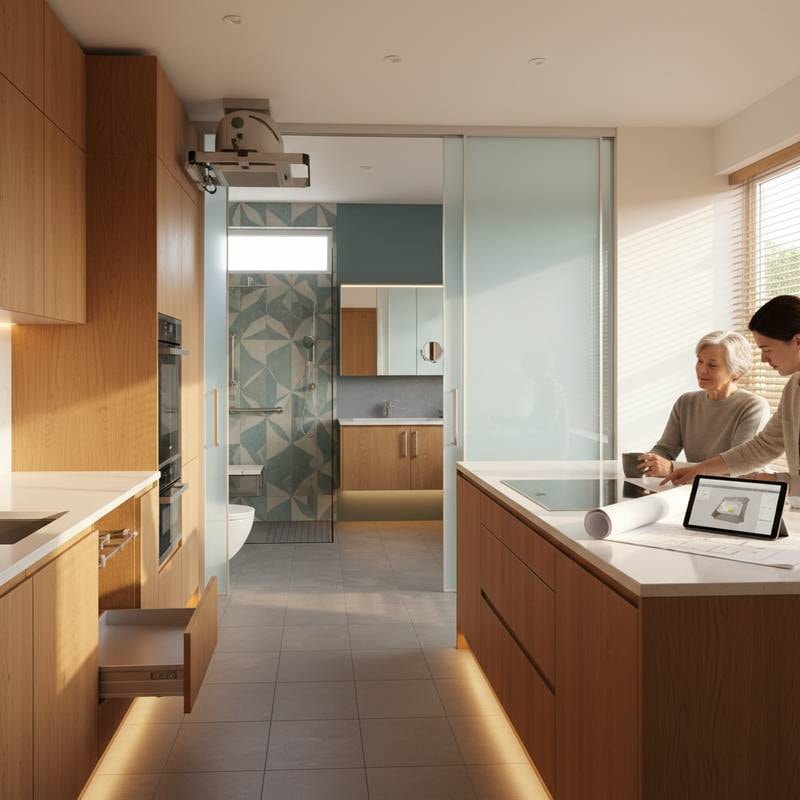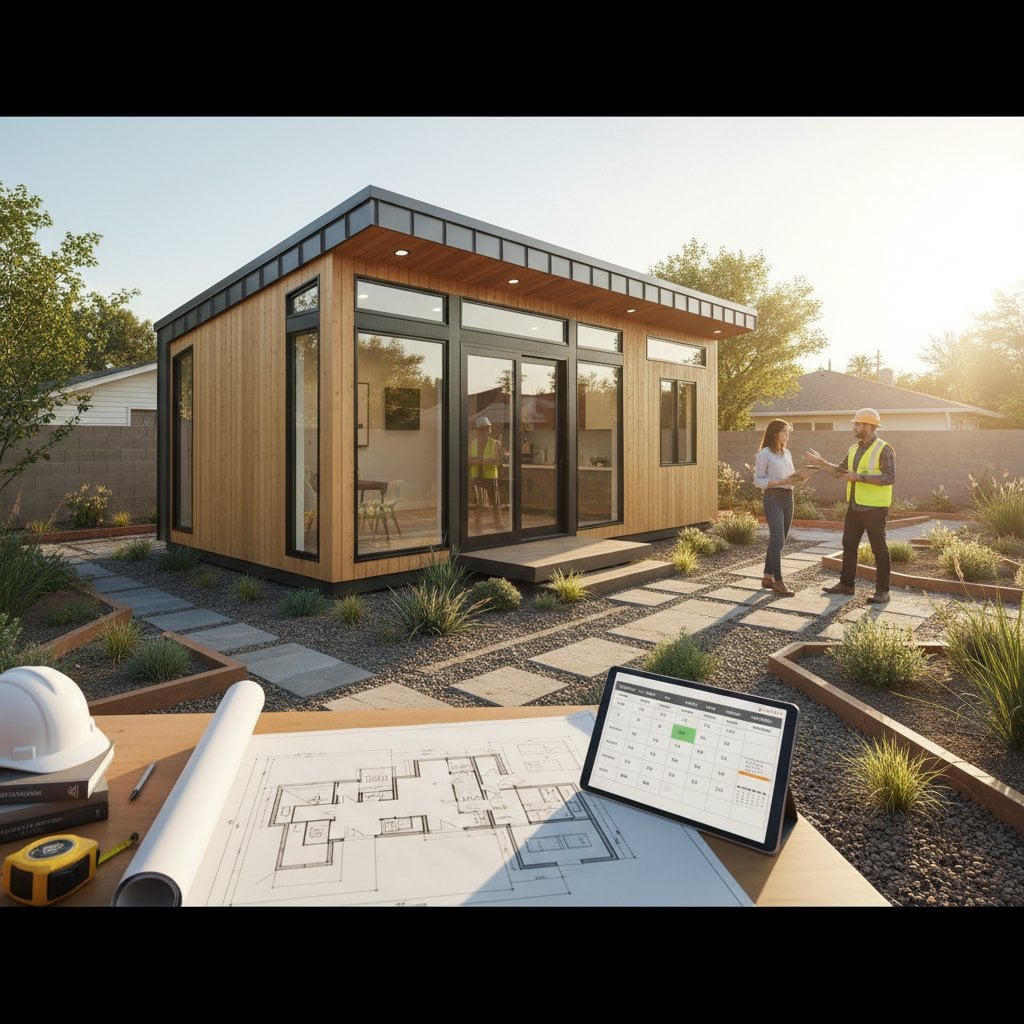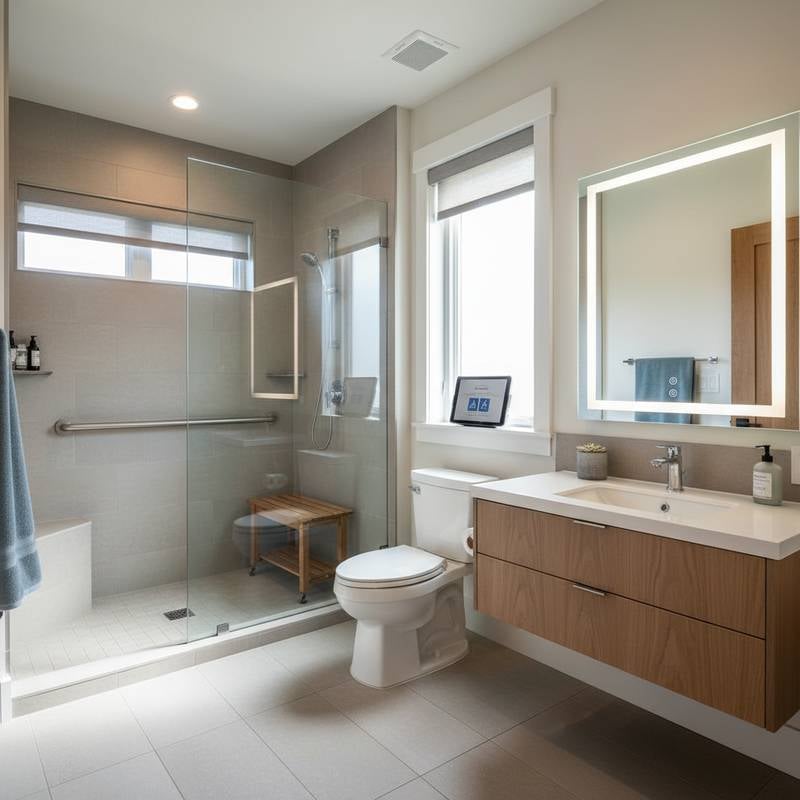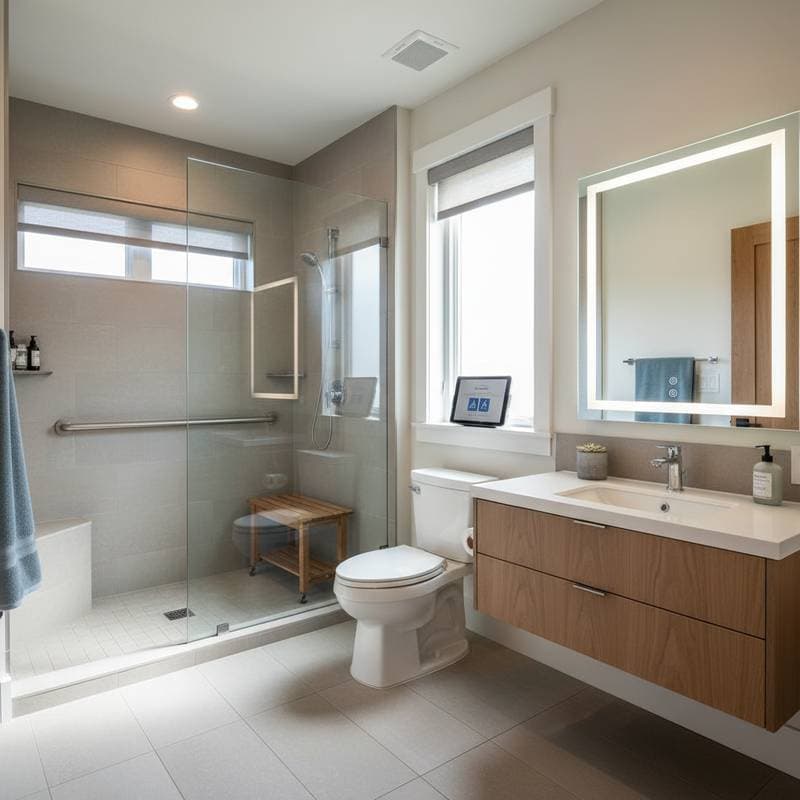Understanding Aging in Place and 2025 Remodeling Costs
Aging in place refers to the practice of modifying a home to accommodate changing physical needs, allowing individuals to remain there safely and independently as they age. These modifications address challenges such as reduced mobility, diminished vision, or decreased strength. In 2025, the costs for such remodels typically range from $15,000 for focused safety enhancements to $80,000 for comprehensive whole-home transformations, influenced by factors like location, material quality, and project scope.
This guide outlines key upgrades, associated expenses, and strategic planning steps. Readers gain insights into balancing budget constraints with essential safety measures. Professional involvement often proves necessary for complex alterations, ensuring compliance with building standards and enhancing long-term value.
Evaluating DIY Options Against Professional Services
Homeowners can undertake certain aging-in-place projects independently to save costs, provided they possess basic skills and tools. These tasks focus on simple installations that improve immediate safety without structural alterations.
Suitable DIY Projects
- Secure non-slip mats or adhesive strips in bathrooms and kitchens to prevent falls on wet surfaces.
- Swap traditional round knobs for lever-style handles on doors and cabinets, facilitating easier operation for those with limited grip strength.
- Install motion-sensor lights in hallways, stairways, and entryways to illuminate paths automatically during nighttime.
- Mount grab bars securely into wall studs near toilets, showers, and bathtubs, using provided templates for precise alignment.
DIY efforts suit minor updates, but they require careful execution to avoid hazards. For instance, a basic set of bathroom safety upgrades might cost between $500 and $1,500, covering materials like bars, mats, and lighting fixtures.
Scenarios Requiring Professional Expertise
Certain modifications demand licensed professionals due to their complexity and potential risks. These include any work that alters the home's core infrastructure.
- Relocating plumbing lines for accessible fixtures or installing a curbless shower with proper drainage.
- Rewiring electrical systems to accommodate smart home devices or additional outlets.
- Expanding hallways or doorways to at least 36 inches wide for wheelchair access, which may involve framing adjustments.
- Retrofitting stairs with lifts or constructing exterior ramps that integrate seamlessly with the home's foundation.
- Upgrading HVAC systems to improve air circulation and filtration, reducing allergens and maintaining comfortable temperatures.
Professional bathroom remodels for aging in place often range from $10,000 to $25,000, accounting for labor, permits, and specialized materials. Local building codes frequently mandate permits for electrical, plumbing, or structural changes; consult municipal offices early to avoid delays or fines.
Essential Safety Considerations and Precautions
Safety forms the cornerstone of any aging-in-place remodel, minimizing risks like falls, slips, and electrical incidents. Implementing these measures early prevents accidents and supports daily routines.
Key Safety Warnings
- Electrical Hazard: Disconnect power at the breaker before working on switches, outlets, or lighting to prevent shocks.
- Slip Risk: Select flooring with a coefficient of friction of 0.6 or higher, tested under wet conditions for reliable grip.
- Fall Risk: Equip staircases with handrails on both sides, extending 12 inches beyond the top and bottom steps for full support.
Workers should wear protective gear, including gloves, safety goggles, and closed-toe shoes, during all phases of construction. Avoid drilling into walls until scanning for hidden pipes or wiring with a stud finder or professional inspection.
Additional preventive steps include installing low-level night lights along pathways, applying contrasting paint stripes on stair edges for visual cues, and ensuring unobstructed floor space. These adjustments can reduce fall incidents by up to 50 percent, according to accessibility experts.
Managing Cleanup and Waste Disposal
Effective cleanup maintains a healthy environment during and after remodeling. Proper disposal prevents environmental harm and complies with regulations.
Separate waste into categories: recycle metals from fixtures, tiles, and wood scraps through designated facilities. Handle hazardous materials, such as leftover paint, adhesives, or chemicals, by scheduling pickup with local waste management services.
Thoroughly vacuum or sweep dust from heating vents, electrical outlets, and hidden corners to safeguard indoor air quality. For extensive projects, rent a dumpster in advance and arrange for professional hauling to streamline the process.
Indicators for Engaging Professional Help
Recognize when DIY limits are reached to ensure project quality and safety. Professionals bring specialized knowledge of universal design principles, which promote accessibility for all ages and abilities.
Thresholds Necessitating Experts
- Resizing or replacing windows and doors to improve natural light and ease of access.
- Integrating mobility aids like platform lifts or residential elevators into existing spaces.
- Transforming traditional bathtubs into barrier-free roll-in showers with fold-down seats and handheld sprayers.
- Building ground-level ramps with gradual slopes, often requiring concrete pouring or wooden framing.
Cost estimates for professional services vary: plumbing or electrical updates fall between $2,000 and $7,000, while widening a single doorway costs $1,000 to $3,000. A complete aging-in-place remodel, encompassing multiple rooms and systems, spans $20,000 to $80,000, depending on customization.
Selecting a Reliable Contractor
- Verify state-issued licenses and proof of liability insurance covering at least $1 million.
- Request a detailed written warranty for both materials and workmanship, typically lasting one to five years.
- Review references from similar accessibility-focused projects, inquiring about timelines and satisfaction.
- Establish a clear contract outlining project phases, milestones, and a phased payment structure to protect finances.
Contractors familiar with universal design ensure modifications enhance usability without compromising aesthetics. Conduct interviews with multiple candidates to find the best fit.
Advanced Strategies for Effective Remodeling
Incorporate forward-thinking elements to future-proof the home. These choices adapt to evolving needs while elevating daily living.
Select matte-finish surfaces and diffused lighting fixtures to minimize glare, which can disorient those with vision impairments. Lever-style faucets and cabinet pulls accommodate arthritic hands, requiring minimal force to operate.
Maintain uniform flooring throughout main areas to eliminate hazardous transitions; use low-pile carpets or seamless vinyl for smooth navigation. Apply high-contrast colors along walls, floors, and thresholds to aid visibility, particularly in low-light conditions.
Install adjustable shelving units in kitchens and closets, allowing height modifications as mobility changes. Integrate smart technologies, such as voice-activated lights, thermostats, and door locks, to enhance control and reduce physical effort.
Planning Your Remodel for Long-Term Independence
Initiate the process with a professional home assessment to identify priority areas, such as bathrooms or entryways. Develop a budget that allocates funds for both immediate fixes and scalable future upgrades.
Blend DIY tasks for quick wins with expert-led projects for durability. Regular maintenance, like annual inspections of grab bars and lighting, sustains the home's accessibility.
These investments foster a secure environment that preserves autonomy and quality of life. By applying universal design, the space benefits all household members, yielding enduring comfort and peace of mind.










